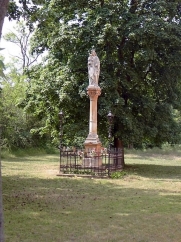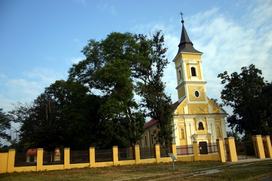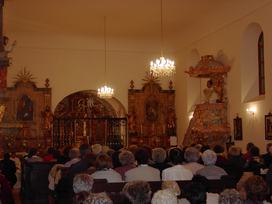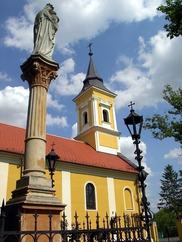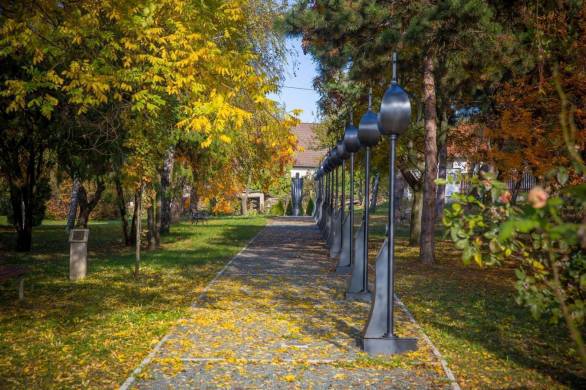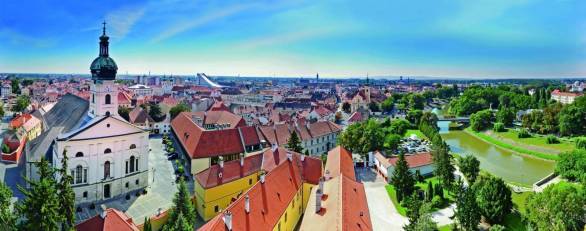Church of St Anthony of Padua
In 1715, Christian Ailert, an imperial officer injured in battle, turning to God to be healed, requested the intercession of St Anthony of Padua. The voice of Our Lady came to him in a dream and told him to visit a spring on the edge of Tét and to bathe in it. The officer washed in the spring’s water and was healed. Out of gratitude, he had a chapel built above the spring, in which he placed a copy of a picture of Our Lady of Perpetual Help. This miraculous recovery made the spring famous, drawing thousands of pilgrims to pray here in the hope of being healed.
In 1744, a Baroque church was built in honour of St Anthony of Padua on the site of the chapel. Its sanctuary has a round-arched ceiling. The miracle-working spring is directly behind the altar. There are two pictures on the main altar: St Anthony of Padua above and Our Lady of Perpetual Help below. A depiction of the birth of the Virgin Mary can be seen in the church’s nave. In 2003, the church gained benches in the churchyard and a people’s altar, so that Holy Mass can be held here on the saint’s day. The statue of Mary next to the churchyard’s open-air altar was erected by Tét worshippers in 1896. Two saints’ days are celebrated each year in Tétszentkút: that of St Anthony of Padua on the Sunday closest to 13 June and that of the Virgin Mary on the weekend closest to 12 September.
